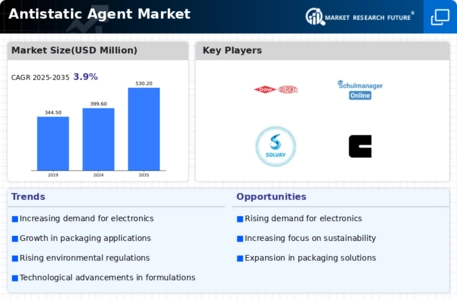Top Industry Leaders in the Antistatic Agent Market

In the electrifying world of modern materials, static electricity isn't just a pesky shock – it can disrupt production lines, damage sensitive electronics, and even spark fires. This is where antistatic agents step in, silently neutralizing the invisible enemy. But the market behind these crucial chemicals is far from static itself. Let's navigate the charged atmosphere of the antistatic agents market, delving into the strategies, drivers, and recent developments shaping this dynamic landscape.
Strategies Buzzing Around the Hive:
-
Innovation Frenzy: Companies like BASF, Dow, and Chemours are investing heavily in R&D, developing novel antistatic agents with improved efficiency, lower toxicity, and wider applicability. Bio-based and biodegradable options are gaining traction, driven by sustainability concerns.
-
Vertical Integration Hum: Major players like Huntsman and Eastman Chemical Corporation are integrating backward to secure raw materials and forward to control distribution channels, aiming for cost-competitiveness and market reach.
-
M&A Buzz: Mergers and acquisitions are happening, with smaller players like Croda International being acquired by larger ones like International Flavors & Fragrances, consolidating market share and expertise.
Key Factors Charging the Market:
-
End-User Boom: Growing demand from industries like electronics, automotive, textiles, and packaging fuels the market. The rise of sophisticated electronics and miniaturization creates a critical need for high-performance antistatic agents.
-
Regulation Rumble: Stringent regulations on volatile organic compounds (VOCs) and hazardous chemicals push for the development of safer and more eco-friendly antistatic agents. This opens doors for niche players specializing in sustainable solutions.
-
Regional Ripples: Regional economic disparity plays a role, with Asia Pacific leading the market due to booming manufacturing sectors. However, stricter environmental regulations in Europe and North America create unique challenges and opportunities for tailored solutions.
Key Players:
- 3M (US),
- BASF SE (Germany),
- DowDuPont (US),
- Akzo Nobel N.V. (Netherlands),
- Croda International Plc (UK),
- Schulman, Inc. (US),
- Arkema (France),
- Solvay (Belgium),
- Evonik Industries AG (Germany),
- Clariant (Switzerland),
- LyondellBasell Industries N.V. (Netherlands), and
- Mitsubishi Chemical Holdings Corporation (Japan).
Recent Developments:
September 2023: BASF and Dow Chemical jointly launch a new online platform for sourcing and comparing antistatic agents, aimed at enhancing market transparency and efficiency.
October 2023: A fire at a major antistatic agent manufacturing facility in the US disrupts supply chains and leads to temporary product shortages.
November 2023: Chemours unveils a novel antistatic agent with significantly reduced toxicity, targeting environmentally conscious customers.
December 2023: Rising costs of energy and raw materials put pressure on smaller players in the market, potentially triggering further consolidation.









